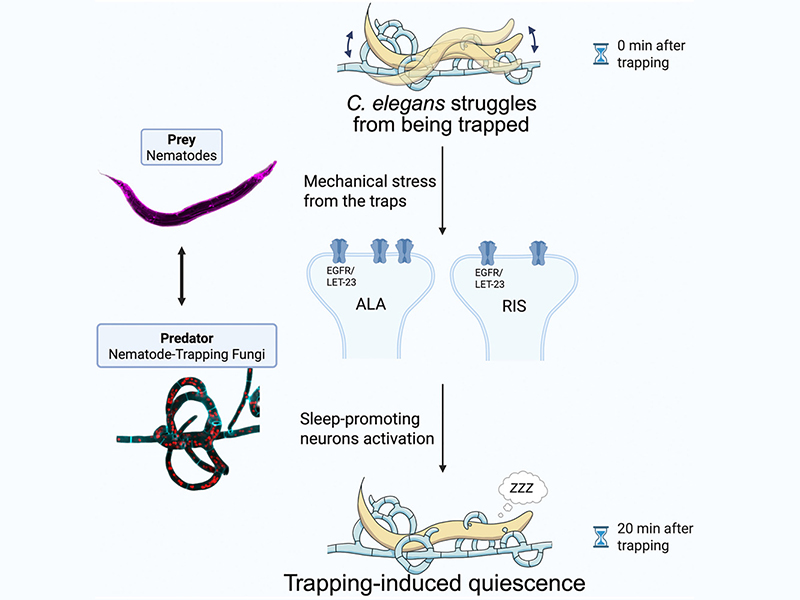Predation by nematode-trapping fungus triggers mechanosensory-dependent quiescence in Caenorhabditis elegans
Dr. Hsueh, Yen-Ping - July, 2025
Animals exhibit diverse behavioral adaptations to predation, driving coevolution across the Tree of Life. Using Caenorhabditis elegans as a genetic model organism, we investigated how nematodes respond to predation by the nematode-trapping fungus Arthrobotrys oligospora. Fungal trapping induces quiescence in C. elegans, characterized by a rapid cessation of pharyngeal pumping and movement. This quiescence is regulated by the activation of sleep-promoting neurons Anterior Lateral neuron A (ALA) and Ring Interneuron S (RIS), with genetic analyses demonstrating that ALA is essential for inhibiting pharyngeal pumping while both ALA and RIS contribute to movement cessation. Mechanosensation and epidermal growth factor receptor (EGFR) signaling are critical to these responses, demonstrating how prey neurophysiology responds to a sessile predator. These findings shed light on the neuronal and molecular mechanisms of stress-induced behaviors, revealing how fungal traps trigger behavioral responses in prey and advance our understanding of predator-prey dynamics.
